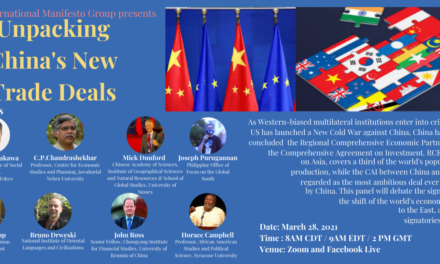BRUSSELS, 29 June, 2006: New figures released today by the ICFTU to coincide with the re-launch of WTO talks in Geneva show the potentially devastating effect on employment that developing countries face from the current negotiations.
The figures are simulations of how various labour -intensive sectors would fare if the current proposals by the EU and the US on Non-Agricultural Market Access were to be implemented.
At the WTO Ministerial in Hong Kong in December, it was agreed that NAMA negotiations would proceed on the basis of a Swiss formula with a range of coefficients, which reduces high tariffs much more than low tariffs, and hence affects developing countries more. Discussions are currently ongoing as to the value of the coefficient for developing and developed countries.
Yesterday's remarks by Pascal Lamy that a coefficient of 20 would be an acceptable number to those involved in NAMA negotiations were received with alarm by trade unionists worldwide, given the undeniably large number of job losses such a drastic cut would result in.
The US and the EU are arguing for a low coefficient of 15 or less for developing countries, which in effect would mean that some of the sectors that employ the highest number of people due to their labour-intensive nature are facing the prospect of tariff cuts of up to 75%.
Guy Ryder, the ICFTU General Secretary said today: "Faced with the challenge of poverty and inequality already, this proposal will deliver neither the flexibility nor the fairness to developing countries that was promised at the start of the talks. "
"It is as if the whole post-textiles agreement debacle didn't happen: the WTO is hell-bent on reducing tariffs in textiles and apparel despite the overwhelming evidence of how such drastic cuts affect employment and ultimately the livelihoods of millions of people. And now they want to spread that same slash and burn strategy to other manufacturing sectors, effectively de-industrialising countries in most need of decent jobs."
The end of the Agreement on Textiles and Clothing (ATC) meant that all the quotas in this sector were reduced to zero in January 2005.
"Prior to the end of the quotas under the ATC we warned the WTO about what would happen, and we were proven right. Today, before the end-game of the round begins we warn the WTO and its key players yet again – think before you inflict such drastic cuts in employment and simply turn citizens against the idea that trade is a way out of poverty for them, and not just a way rich countries can maintain the status quo," Ryder concluded.
Textiles and apparel would be the hardest hit again, with rubber and plastic products, furniture and auto sectors also faring badly under the current proposal. These sectors represent a high proportion of formal employment in developing countries and the cuts would inevitable lead to a massive job haemorrhage. For example, Argentina would be asked to cut its bound tariffs on textiles and auto parts by 50 and 62 per cent respectively, and Indonesia to cut its tariffs on motor vehicles by 61%. Morocco would have to reduce tariffs by 78% in the clothing and textiles sectors which employ just under half of those in formal employment in this country.
Below is a table showing the extreme cuts in tariffs that developing countries would be asked to make:
COUNTRY AV. REDUCTION IN BOUND TARIFF RATES/CO-EFFICIENT OF 15
Argentina 68%
Brazil 67%
Colombia 70%
Costa Rica 75%
India 70%
Indonesia 70%
Mexico 70%
Morocco 73%
Peru 66%
Philippines 63%
South Africa 52%*
Tunisia 73%
Uruguay 68%
*Despite this figure appearing to be the lowest of the 13 countries profiled, South Africa will in fact be affected the most due to the fact that that they will have to implement deep cuts in applied rates.
The report outlining the full simulations for a range of product lines, using a range of formulas for all thirteen countries can be read at http://www.icftu.org/www/PDF/ICFTUNAMAtariffsimulations.pdf
* ICFTU Press Department +32 2224 0204 or +32 476 621 018.







